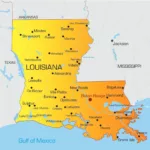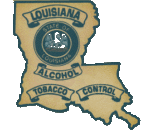The Economics of Opening a Bar in Canada: A Perspective
The bar industry in Canada, vibrant and ever-evolving, is a significant sector within the broader hospitality market. With a diverse range of establishments catering to various tastes and social interactions, bars remain a staple of Canadian nightlife and social culture.
Photo by Pixabay: https://www.pexels.com/photo/blue-harp-decor-on-brown-wooden-table-63633/
Market Analysis
The Canadian bar industry has demonstrated resilience and adaptability, especially in the wake of recent global challenges. As of 2024, the industry continues to recover and grow, leveraging innovative approaches such as themed nights, craft beverage offerings, and enhanced customer experiences to attract a broad demographic.
Trends and Statistics from 2023-2024
Recent data indicates a positive trend in consumer spending within the bar sector, with an increase in the consumption of premium and craft beverages across the country. It’s a $2.0bn worth market. In 2023, the industry saw a 2.3% growth in revenue, a testament to the recovering economy and changing consumer habits post-pandemic.
Consumer Preferences and Spending Habits
The Canadian consumer’s preference is increasingly leaning towards unique and high-quality drinking experiences. Bars that offer local, sustainable, and craft options are seeing higher foot traffic and customer retention.
Spending habits have shifted, with a noticeable increase in spending on experiential and premium services, reflecting a broader trend in consumer behavior towards valuing quality and experience over price.
Photo by Edgar Chaparro on Unsplash
Costs Involved in Opening a Bar
Initial Investment and Startup Costs
Opening a bar in Canada requires a substantial initial investment. The primary expenses include licensing and permits, which vary by province but are essential for legal operation.
Substantial funds are allocated to acquiring the right venue, and fitting it with the necessary equipment such as bar counters, seating, and kitchen appliances if food will be served.
Initial expenses often range from CAD 100,000 to over CAD 500,000 depending on the location, size, and concept of the bar.
Ongoing Expenses
Ongoing operational costs are significant and include rent, which is highly variable by location and can be one of the largest monthly expenses.
- Utilities such as electricity, water, and internet also contribute to the monthly overhead.
- Staffing costs often represent another major expenditure, requiring careful management to balance customer service with labor efficiency.
- Inventory costs for alcohol and possibly food must also be managed effectively, with regular adjustments based on consumption patterns and supplier prices.
Photo by Aleksandr Popov on Unsplash
Financing Options for Opening a Bar in Canada
Bank Loans
One of the most common methods for financing a new bar is through bank loans. Banks offer various types of loans that can be used to cover the initial costs of opening a bar. These loans are typically offered with repayment terms that can be adjusted to match the business’s cash flow, making them a viable option for long-term financing.
Investor Funding
Another traditional route is seeking investors who are interested in the hospitality industry. These can be individuals or investment groups looking to fund promising ventures for a return on their investment. Securing investor funding often requires a solid business plan and a clear path to profitability.
Government Grants and Incentives
In some cases, government programs are available to support small businesses in Canada. These may include grants, which do not need to be repaid, or other financial incentives designed to encourage entrepreneurship in certain sectors, including hospitality.
Alternative Financing Solutions
Crowdfunding
Crowdfunding platforms provide a way to raise funds by reaching out to a large number of people typically through the internet. By presenting your business idea to potential backers, you can secure small amounts of funding from a large pool of people, which can add up to significant capital.
Venture Capital
For more ambitious projects that demonstrate high growth potential, venture capital could be an option. This involves pitching your business to venture capitalists who provide significant sums of money in exchange for equity in the company.
Quick Loans
For those needing immediate funds to capitalize on timely opportunities or cover unexpected expenses, quick loans can be a practical solution. Platforms like Credit Club Loans offer fast and flexible lending options that can be more accessible than traditional bank loans, often with less stringent qualification criteria.
Each financing option comes with its own set of advantages and requirements. When planning to open a bar in Canada, it’s crucial to assess your financial needs accurately and choose the option that best suits your business’s short-term needs and long-term goals.
Photo by Louis Hansel on Unsplash
Revenue Streams
A bar in Canada can generate income from multiple streams: the primary source is typically alcohol sales, including beers, wines, and spirits.
Food sales can also contribute significantly to revenue, especially in establishments that pair quality drink offerings with complementary food menus.
Hosting events like live music, trivia nights, or private parties provides additional revenue opportunities and can help in building a loyal customer base.
Strategies for Maximizing Profitability
To enhance profitability, successful bars focus on creating unique experiences that attract and retain customers.
This can include offering signature drinks, optimizing the menu seasonally, and utilizing promotions and happy hour specials.
Efficient inventory management and training staff to provide exceptional service also play critical roles in maximizing margins and enhancing the overall customer experience.
Regulatory Framework
The alcohol industry in Canada is heavily regulated, with each province setting its own specific rules regarding the sale and consumption of alcoholic beverages. Compliance with these regulations is critical and includes adhering to licensing requirements, which can involve several layers of government approval.
Necessary Licensing and Permits
To operate a bar, one must obtain several licenses, including a liquor license, a business license, and potentially a food service permit if the establishment serves meals.
The process can be complex and time-consuming, often requiring proof of responsible alcohol service training for staff, appropriate zoning permissions, and adherence to health and safety standards.
Photo by Steve Allison on Unsplash
Risk Management
Opening a bar in Canada comes with its set of challenges and risks. Significant among these are the competition from existing bars and new entrants in the market, which can saturate certain areas, particularly in urban centers.
Changing consumer preferences, such as shifts towards non-alcoholic beverages or healthier options, can also impact traditional bar revenues. Regulatory changes at the provincial or federal level could affect operational practices and profitability, requiring bars to stay adaptable and compliant.
Strategies to Mitigate These Risks
To effectively manage these risks, bar owners should focus on differentiating their offerings, perhaps by creating niche experiences or specializing in unique products that are hard to find elsewhere.
Staying attuned to market trends and customer feedback can help anticipate shifts in consumer preferences.
Regular training for staff on regulatory compliance and active engagement with local business associations can also help navigate and anticipate changes in the legal landscape.
Endnote
Opening a bar in Canada involves careful consideration of market conditions, financial planning, and regulatory compliance, but it also offers exciting opportunities for growth and innovation in the hospitality sector. By strategically navigating these aspects and utilizing available financing options, aspiring bar owners can turn their vision into a thriving reality.










